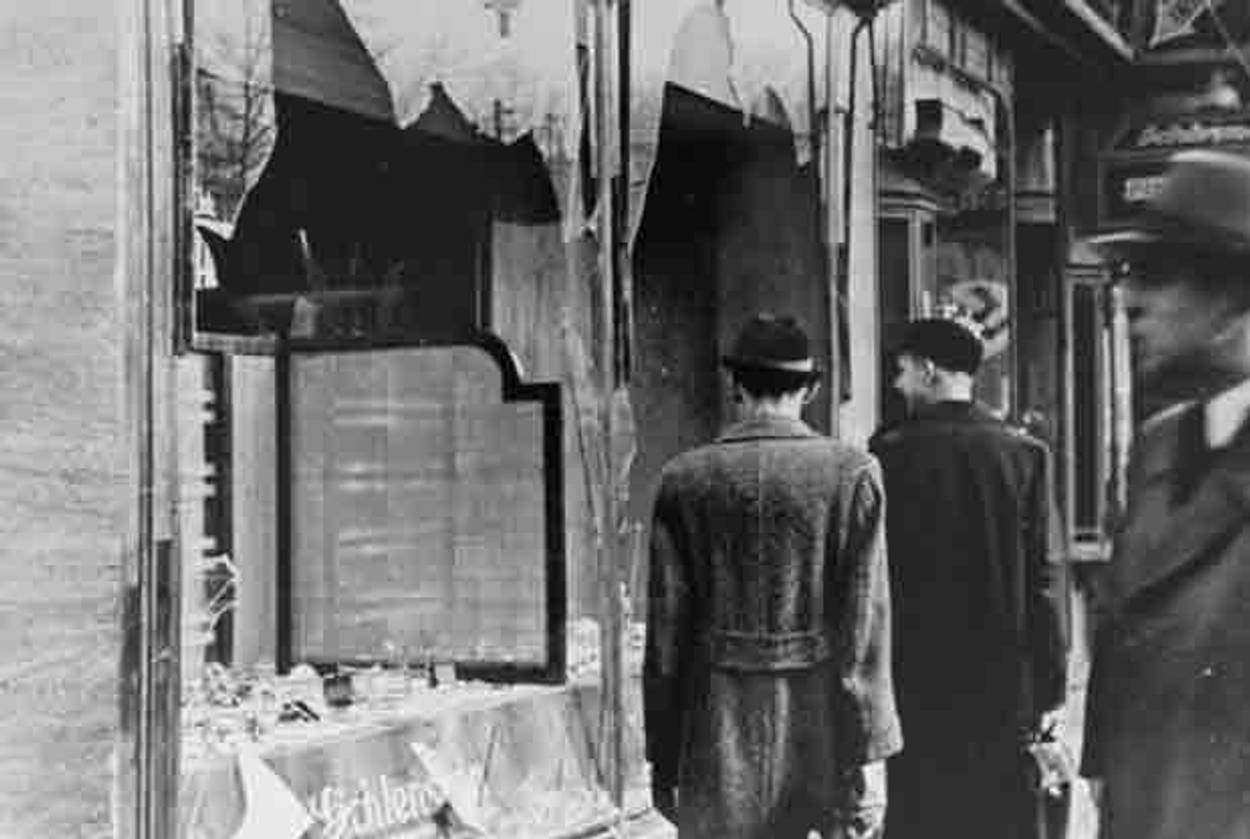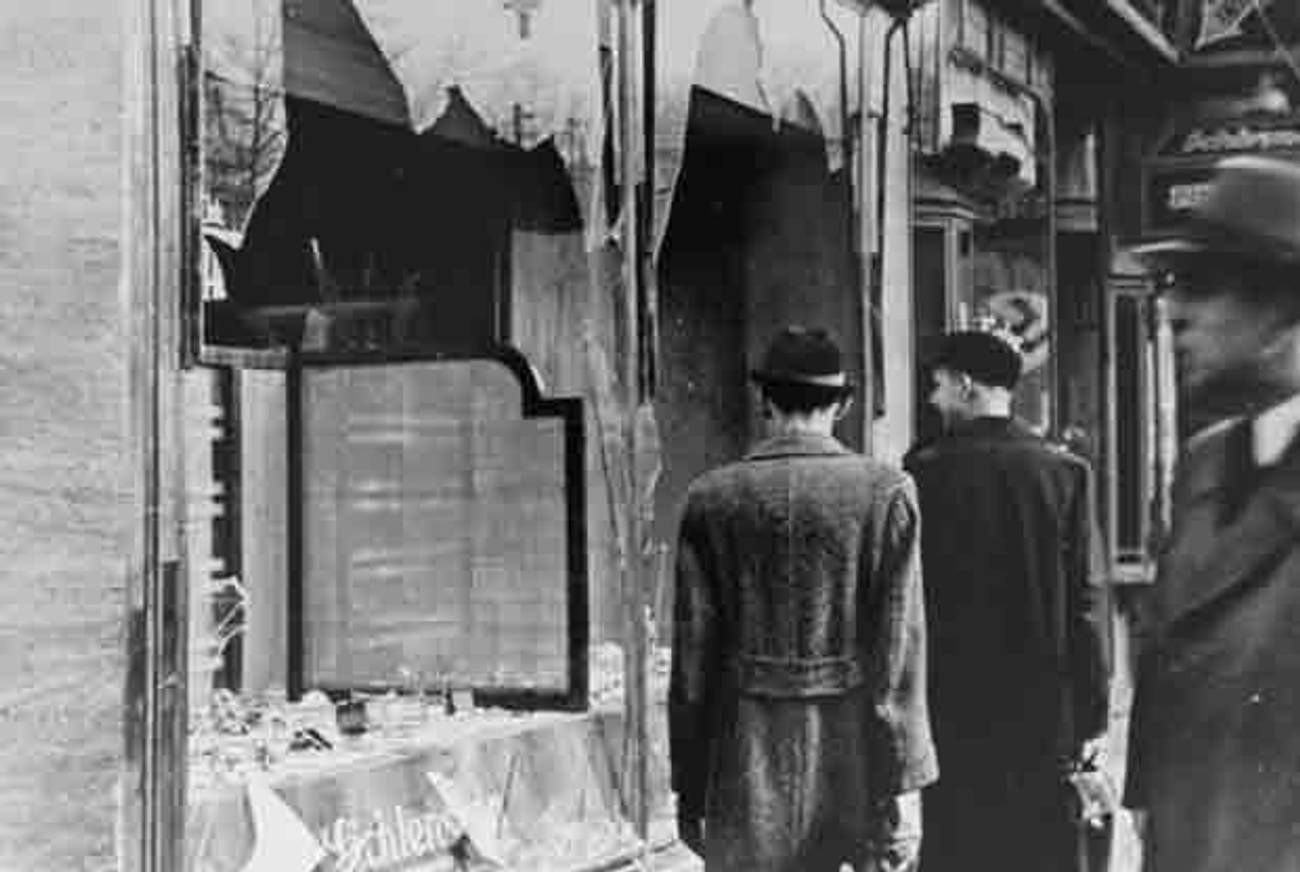Reexamining FDR’s Response to Kristallnacht
Ken Burns and others call it impressive, but the truth is less inspiring




As the 76th anniversary of Kristallnacht is marked with solemn ceremonies at synagogues around the country this week, a new film and book are hailing President Franklin D. Roosevelt’s response to the pogrom as forceful and impressive. But a long-forgotten diary entry by a Roosevelt cabinet member tells a different story.
On the night of November 9-10, 1938, the Nazis unleashed a nationwide pogrom against Germany’s Jews. Hundreds of synagogues were torched, the windows of thousands of Jewish businesses were smashed, 100 Jews were murdered, and 30,000 more were dragged off to concentration camps.
The recent Ken Burns PBS documentary The Roosevelts (and its coffee-table companion book) emphasizes that President Roosevelt sharply condemned the pogrom, “ordered the visas of 15,000 German and Austrian resident aliens extended,” and “recalled his ambassador from Berlin, something neither Britain nor France dared do.” Likewise Richard Breitman and Allan Lichtman, in their recent book FDR and the Jews, praised the president’s “humanitarian impulse” in “acting on his own inclinations with little support from his foreign policy team.”
Actually, President Roosevelt’s steps in response to Kristallnacht were conceived and proposed by members of his team, not by FDR himself.
Five days after receiving a telegram from Rabbi Stephen S. Wise, Roosevelt’s most prominent supporter in the Jewish community, alerting him that the pogrom was “far worse than you know,” the president finally issued a public condemnation.
The condemnation was just four sentences long. The president did not mention either the Hitler regime or its Jewish victims. He said that “the news of the past few days from Germany” had “shocked public opinion,” and he “could scarcely believe that such things could occur in a twentieth-century civilization.”
The idea of asking the U.S. ambassador in Berlin to come back to Washington to report to President Roosevelt was suggested by Assistant Secretary of State George Messersmith. He warned the president that without such a step, America would “fall behind in public opinion” and lose prestige throughout the world. Exactly as Messersmith recommended, FDR emphasized that he was calling the ambassador home “for consultation.” There was no suspension or severance of U.S. relations with Nazi Germany.
The idea of extending the visitors’ visas of German citizens (most of them Jews) in the United States originated in a proposal by Secretary of Labor Frances Perkins. A longtime advocate for refugees, Secretary Perkins actually urged even wider use of the visitors’ visas. She proposed granting visitors’ visas to would-be German Jewish immigrants in general, as a way of getting around the excessive restrictions that American consular officials in Germany were using to disqualify potential immigrants.
But Roosevelt would have none of that. Extending the visitors’ visas of the 15,000 German citizens who were already in the U.S. was an easy way to appear “humanitarian” without permitting a single additional refugee to enter the country.
Six months later, when the refugee ship St. Louis was hovering anxiously off America’s shore, Treasury Secretary Henry Morgenthau, Jr. proposed admitting the passengers to a U.S. territory, the Virgin Islands, on visitors’ visas. Secretary of State Cordell Hull, with the president’s backing, shot down that proposal on the grounds that, technically, a visitor’s visa could be issued only to someone who had a valid return address to which he or she would return. Yet that technicality had not been an obstacle when the president wanted to make his post-Kristallnacht gesture.
Contemporary defenders of FDR’s response to Kristallnacht are correct when they note that Britain and France, unlike Roosevelt, did not recall their ambassadors from Berlin for consultations. But the British government took concrete steps that were much more significant than a symbolic diplomatic consultation. It admitted 10,000 German Jewish refugee children—the famous Kindertransport—and granted haven to 14,000 young German Jewish women by admitting them as cooks and nannies. By contrast, President Roosevelt refused to endorse post-Kristallnacht legislation, the Wagner-Rogers Bill, that would have admitted 20,000 German Jewish children.
An entry in the private diary of Interior Secretary Harold Ickes (published in 1954) sheds light on FDR’s basic attitude. Ickes had been invited to participate in a post-Kristallnacht broadcast on CBS Radio. As was customary, he submitted the draft of his speech to the White House. “The draft as submitted was approved,” Ickes wrote in his diary, “except that the President wanted us to cut out all references to Germany by name as well as references to Hitler, Goebbels, and others by name.”
Despite the pogrom, despite everything else the Hitler regime had done to the Jews, President Roosevelt was still anxious to avoid criticizing any Nazi leaders by name, so as not to harm America’s relations with Nazi Germany.
Three weeks later, FDR censored Ickes again. When the Interior Secretary showed the White House a speech he planned to give to a Jewish audience in Cleveland in early December, he was ordered to delete a sentence on the welcoming of refugees that said, “Perhaps it is too much to hope that America in time can or will return to its former noble historic policy.”
For the Roosevelt administration, a return to that noble policy was indeed too much to hope for—or even to mention.
Related: Long-Lost Plea to FDR Revives Question: How Could Europe’s Jews Have Been Saved?
Why Didn’t FDR Help European Jews? Hints in His Decision To Intern Japanese Americans
Rafael Medoff is director of The David S. Wyman Institute for Holocaust Studies, in Washington, D.C. His latest book is FDR and the Holocaust: A Breach of Faith.